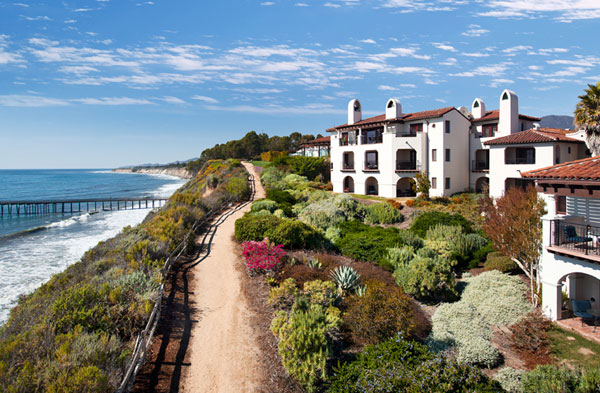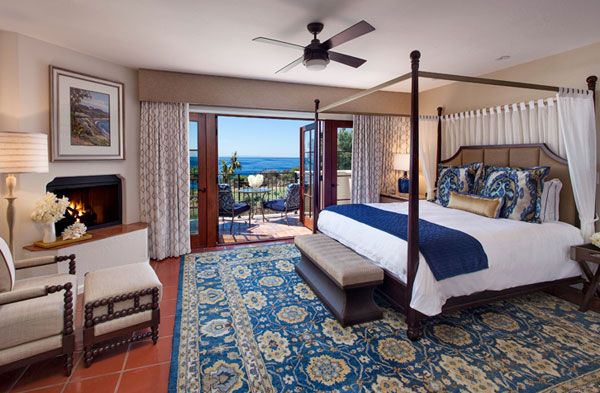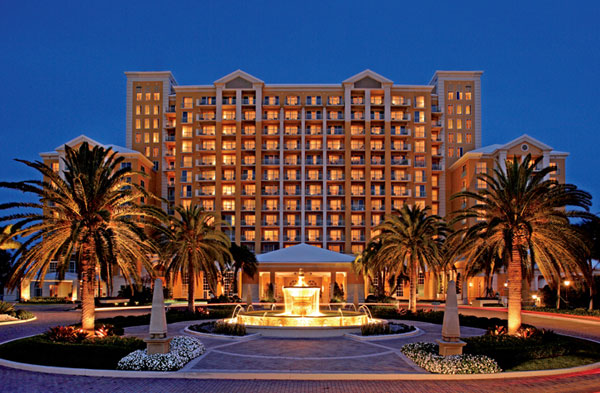✕

Column: industry Tag: Carey Watermark,acquisition Published: 2017-11-17 14:36 Source: Author:

Carey Watermark Investors acquired the 78-acre Bacara Resort & Spa in September and immediately rebranded it as Ritz-Carlton Bacara. (Photo: Carey Watermark Investors)
PHOENIX—Michael Medzigian admits Carey Watermark Investors is one picky investor. With a limited number of competitors vying to acquire the resorts, unique and/or big-market assets it covets, the company is comfortable sifting through many options to find the best opportunities.
Medzigian, Carey Watermark’s president & CEO, said during a break at the recent Lodging Conference that his team’s efforts have paid off in a big way with the two properties it acquired thus far in 2017—the Charlotte (North Carolina) Marriott City Center in June and the Bacara Resort in Santa Barbara, California, in September.
The two deals came on the heels of acquiring the Ritz-Carlton San Francisco?in the closing days of 2016.
“We’ve got a pretty darn good portfolio—resorts that could never be replicated and high-quality brands,” he said. “We are more focused today on maintaining that type of quality than we were four years ago. We’ve become a little more strategic on things we buy and a little less opportunistic.
“We look at 2,000 to 3,000 investment opportunities a year. … We only have to buy five,” he added. “We can find five opportunities in an environment like the one we’re in.”

Michael Medzigian,
Carey Watermark Investors
Carey Watermark owns 32 hotels comprising 8,707 guestrooms through its various investment funds. As of June 30—prior to the acquisition of Bacara—the company said its assets were valued at $2.4 billion. More than two-thirds of its properties are in the Marriott International system.
Watermark’s targets generally include urban select-service hotels in top 25 markets, newly constructed hotels and resorts, Medzigian said.
“Generally, there’s less you can do with those hotels (once you buy them) to add value,” he said. “They have efficient operations, but we do find opportunities. We have gravitated over time a little bit away from select-service more to the bigger-box urban and resort assets.”
“Big box” to Watermark means 400 to 500 rooms with a lot of meeting space, Medzigian said.
“There’s a lot of leverage you can pull to add value, but there’s very little of that type of property being built today,” he said.
Two big acquisitions in 2017
Medzigian said the big plays this year for Carey Watermark involved?two unique assets.
The first was for the Charlotte Marriott City Center, which is known as “M Beta,” because previous owner Marriott International spent more than $40 million in 2016 to reposition the 550-room hotel as the most technologically advanced full-service property within the Marriott Hotels & Resorts system. Carey Watermark reportedly acquired the property for $152 million.
“It’s their innovation lab,” he said, adding that the property include guestrooms with buttons on the wall for guests to “vote” on various offerings in the room. “We bought it primarily because it’s a good investment in a good market. It’s one of the smaller markets we’re in, but it has as good a current income as we have seen for the quality of the asset. It was a good balance.
“We didn’t (buy it) because it was their innovation lab, although I really love being at the center of all the thought that’s going through that property,” he added.
The second deal involved the 78-acre, 358-key Bacara Resort that sits on a cliff overlooking the Pacific Ocean. Carey Watermark acquired the property from Pacific Hospitality Group?for an undisclosed sum. The company rebranded the Bacara as a Ritz-Carlton the day the deal closed.
“It’s a phenomenal piece of real estate—the original developer took about 30 years to develop it,” Medzigian said of the property. “It would be impossible to build today. I’d call it one of a kind.”
The resort has 70,000 square feet of meeting space.
“The seller had done a very good job of operating the asset, improving profitability—but operating as an independent resort, there were some limitations on where you could take it,” he said. “Our conclusion was if you looked at the luxury coastal competitive set or the Santa Barbara competitive set … this property was running a little below the comp sets. To me, the answer for that is a brand.”

The oceanfront guestroom is one of 358 rooms at the Ritz-Carlton Bacara. (Photo: Carey Watermark Investors)
Medzigian said Carey Watermark will spend nearly $20 million to redo the resort’s spa, public space, meeting space and to create a Ritz-Carlton Club.
“How you get occupancy up in this type of hotel is to have more mid-week group business,” he said. “Ritz is very good at that. I couldn’t be more excited.”
The Bacara acquisition is a primary example of Carey Watermark’s approach to looking for unique opportunities, the CEO said.
“We don’t have a lot of competitors in that space,” he said. “For a Bacara-type asset … it’s a pretty limited pool.”
Capital from China, the Middle East and publicly traded REITs has slowed to a trickle, he said.
“Chinese inbound investment capital is gone,” Medzigian said. “Who we were competing with 12 to 18 months ago … that capital is for all intents and purposes gone.”
Adding to the portfolio
The company would like to bolster its portfolio by adding large hotels in major urban centers such as Boston; Washington, D.C.; Los Angeles and Seattle, Medzigian said.
He said his thinking has changed to “thinking about adding value to hotels over a seven- or eight- or nine-year period” rather than buying and flipping an asset within three years.
“We spend a lot of time thinking about ways we can increase margin and cut costs and spend a lot of time and spend money to create new venues inside the properties and remerchandise the assets,” Medzigian said.

The Ritz-Carlton Key Biscayne (Florida) is one of 32 properties in Carey Watermark Investors’ portfolio. (Photo: Carey Watermark Investors)
When Carey Watermark executives look at a property-improvement plan, they also think about proposing return-on-investment projects beyond the PIP that will add incremental return for its investors, he said.
Medzigian said he expects the company’s transaction activity to be similar to what it was in 2017. It is in the process of disposing of a few of the assets it bought early on.
“On balance you’ll see us as a buyer,” he said. “Our business model works very well.
We don’t see a need to change much of anything. … Our investors are pretty pleased.”
That strategy is in large part driven by positive performance of the hotel industry overall, he said.
“There’s nothing fundamentally wrong with the hotel business,” Medzigian said. “I am a big believer that if you look at any of the data, this is a high-growth industry that will grow beyond GDP.”
Previous:STR: US hotel results for week ending 11 November
Next:The Dixon set to open in Tower Bridge, London, in late 2018
Hot key words
Hot Products
Popular Vendors